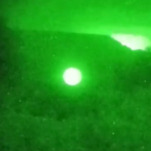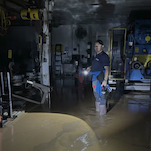Render ghosts, molecular scanners, electromechanical couture, baby pics, autonomous ships
1. Where the people in architectural renderings come from.
“So where do these people come from now? For architects, the process of collecting their ‘entourage’ used to begin in architecture school. Scanned JPGs of people, cut out from magazines or newspapers like so many paper dolls, might be handed down from teachers to students. But the internet has changed all that. Now you can entrust a stock photography company to hire models posing as on-the-nose characters. Bundles of ‘Single Casual People‘ can be had for $50 or more.”
+ See also James Bridle’s Render Ghost project.
2. This molecular scanner for your smartphone will be amazing, if it works as advertised.
“Meet SCiO. It is the world’s first affordable molecular sensor that fits in the palm of your hand. SCiO is a tiny spectrometer and allows you to get instant relevant information about the chemical make-up of just about anything around you, sent directly to your smartphone.”
-

-

-

-

-

-

-

-

-

-

-

-

-

-

-

-

-

-

-

-

-

-

-

-

-

-

-

-

-

-

-

-

-

-

-

-

-

-

-

-

-

-

-

-

-

-

-

-

-

-

-

-

-

-

-

-

-

-

-

-

-

-

-

-

-

-

-

-

-

-

-

-

-

-

-

-

-

-

-

-

-

-

-

-

-

-

-

-

-

-

-

-

-

-

-

-

-

-

-

-

-

-

-

-

-

-

-

-












































































































